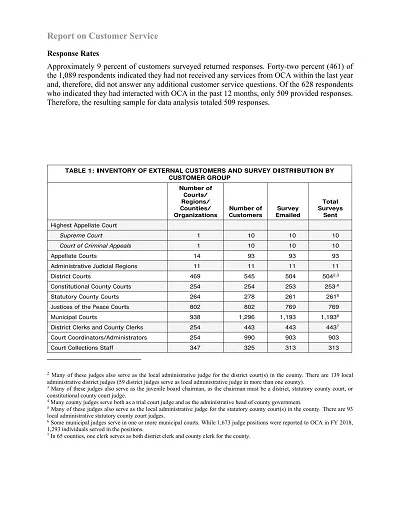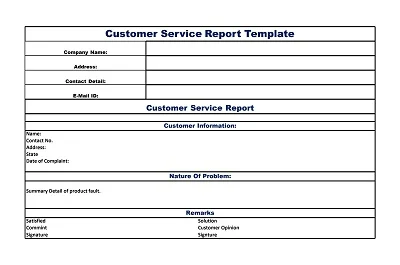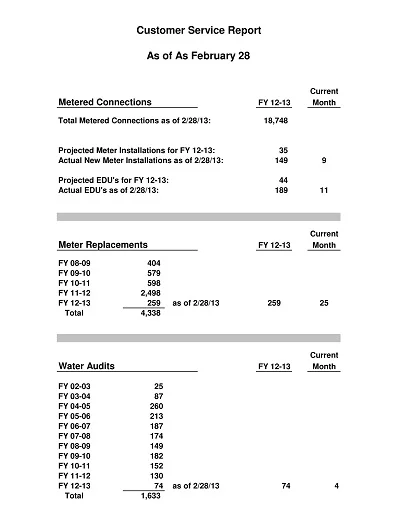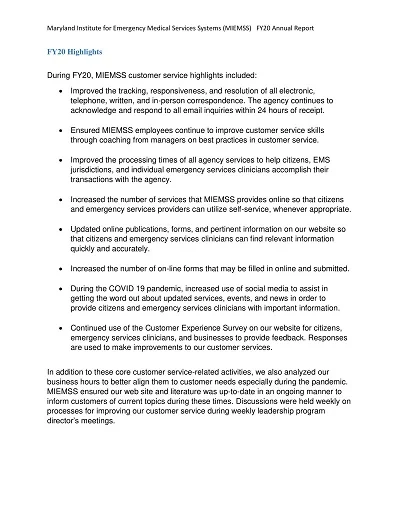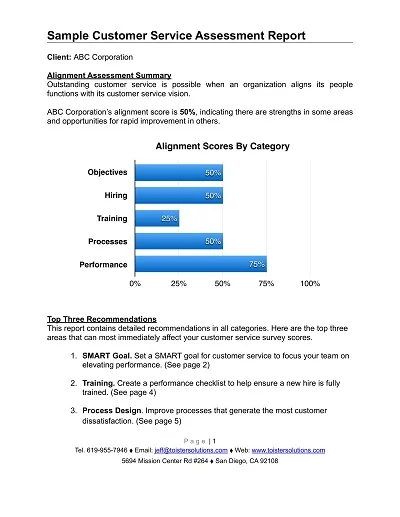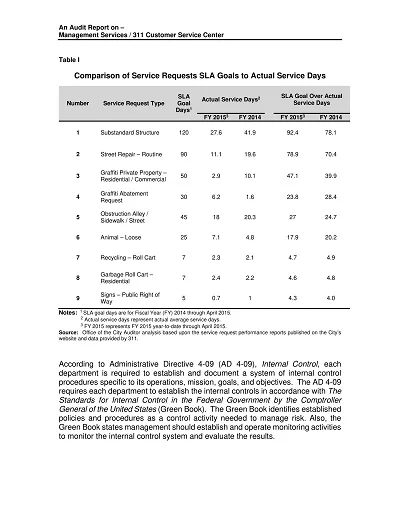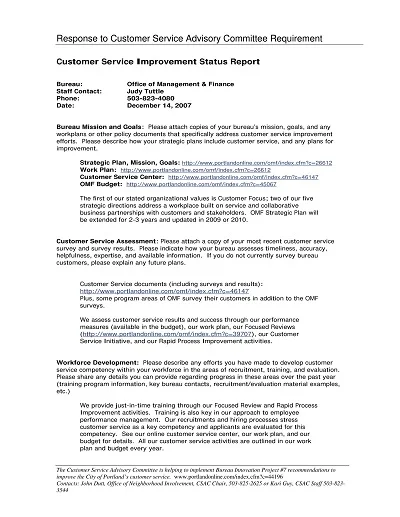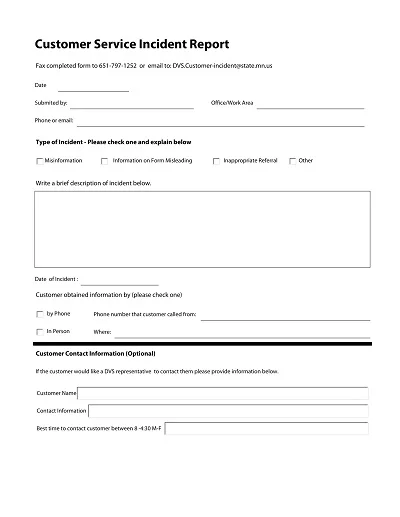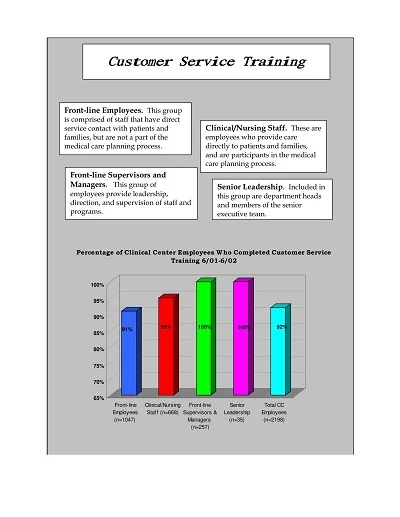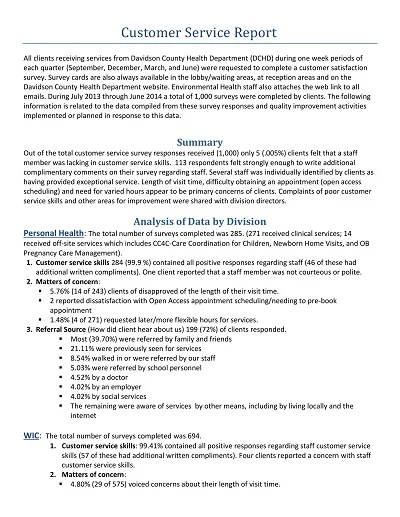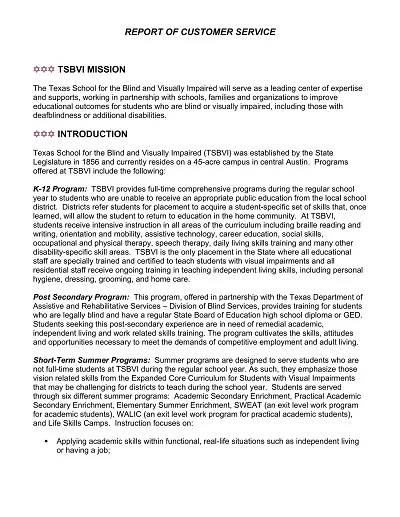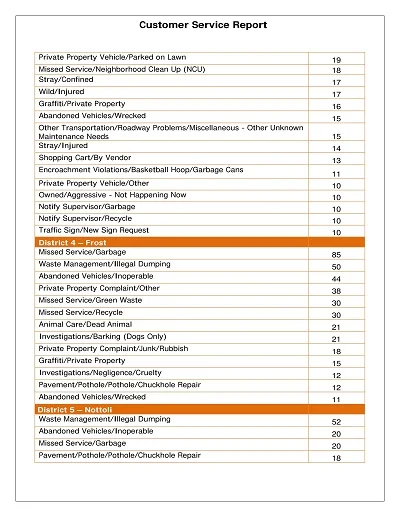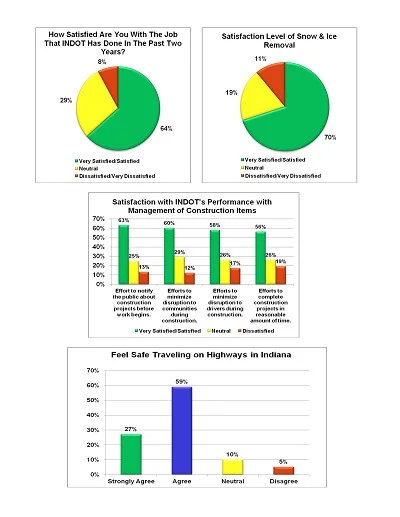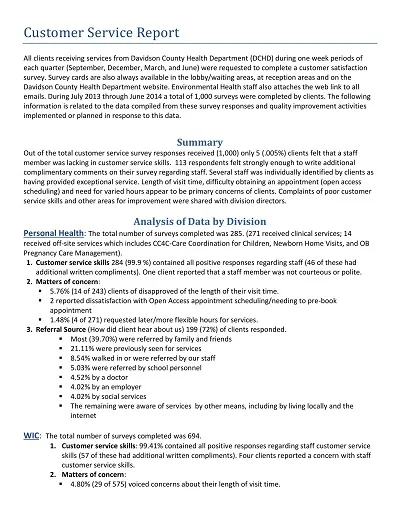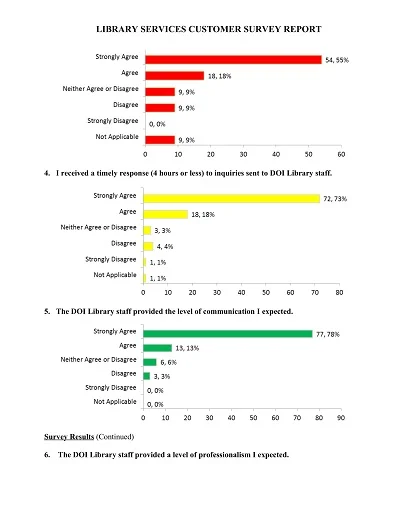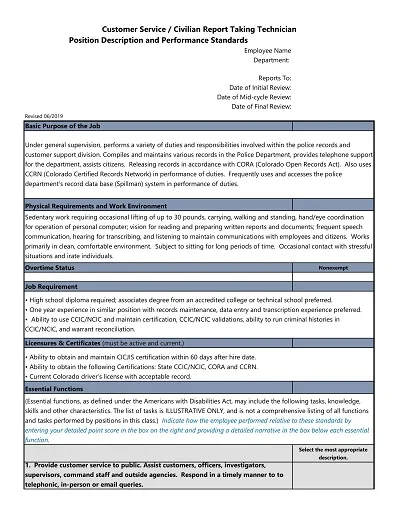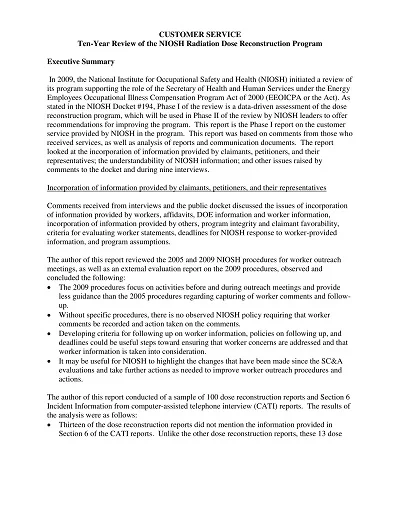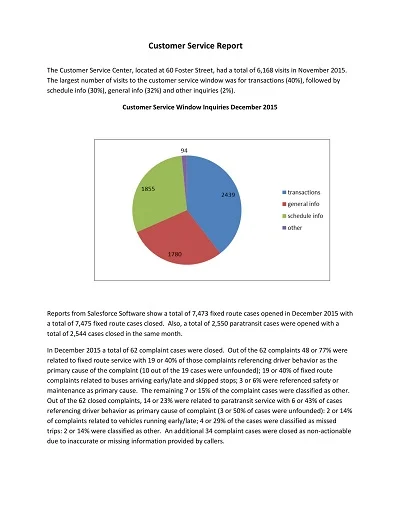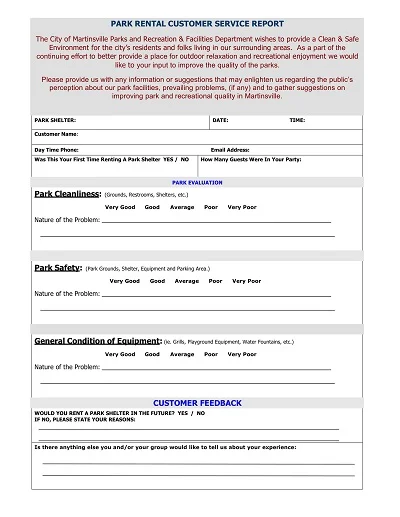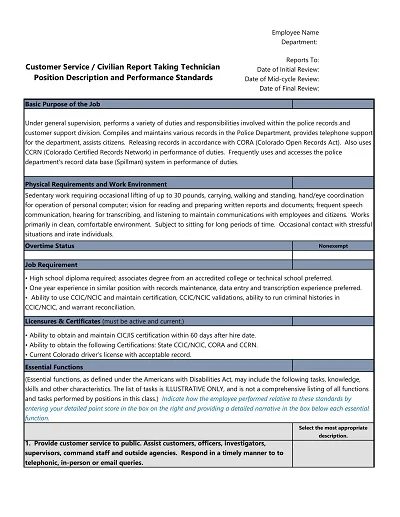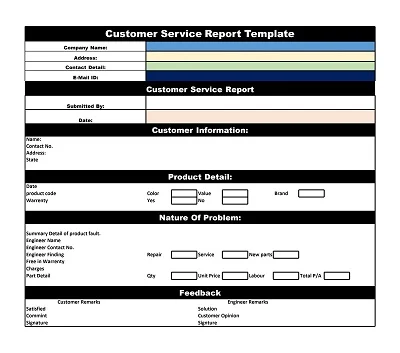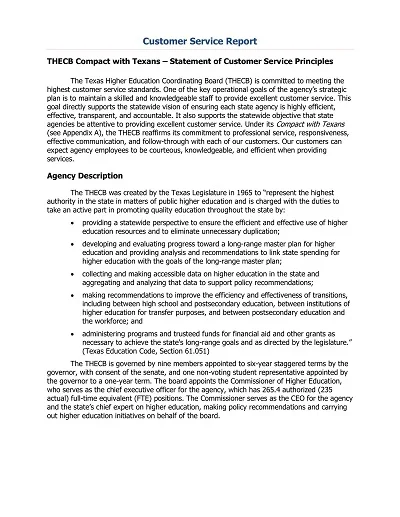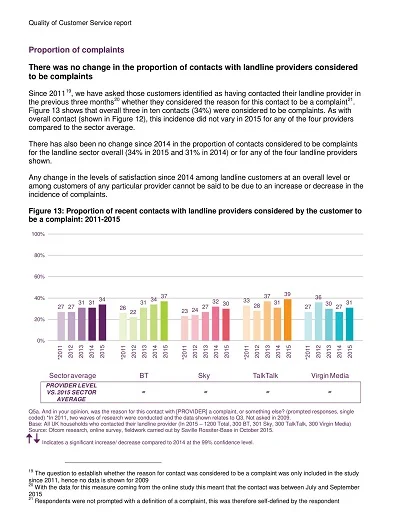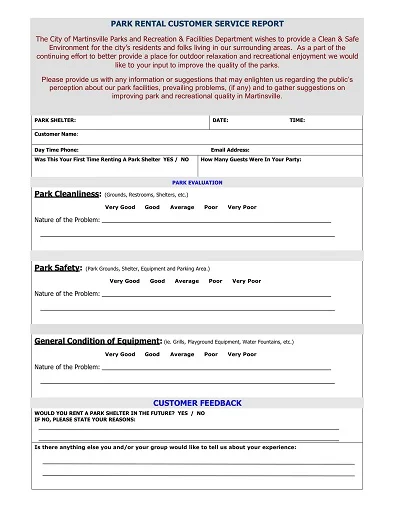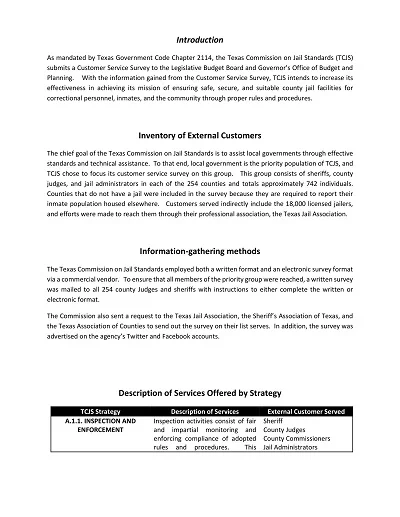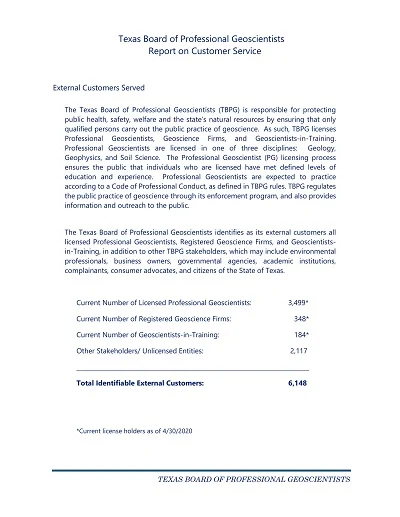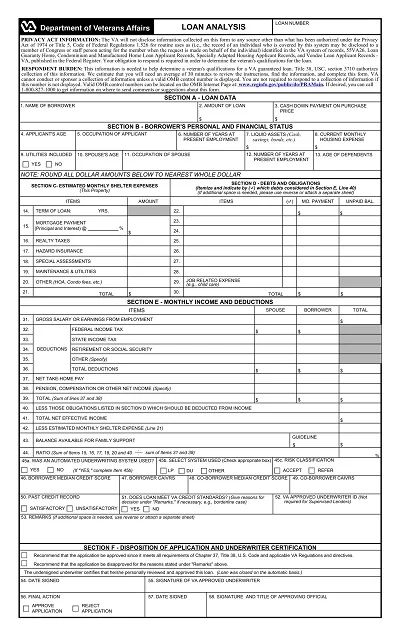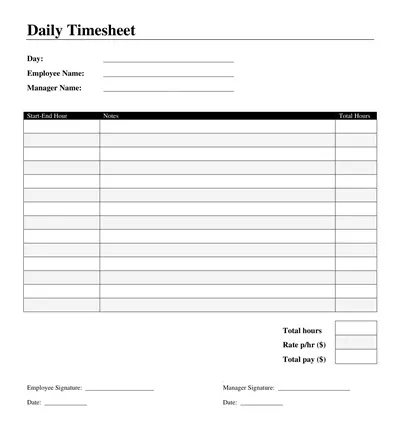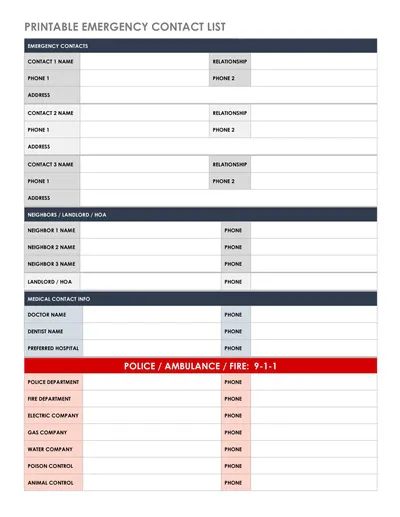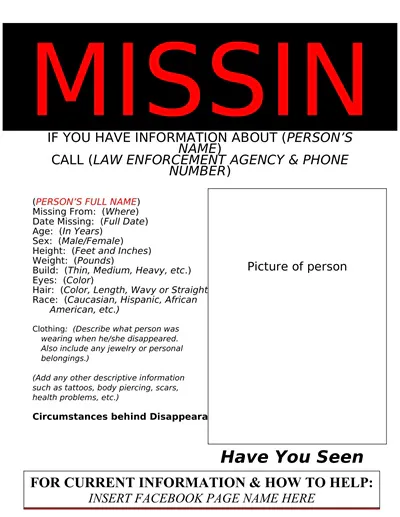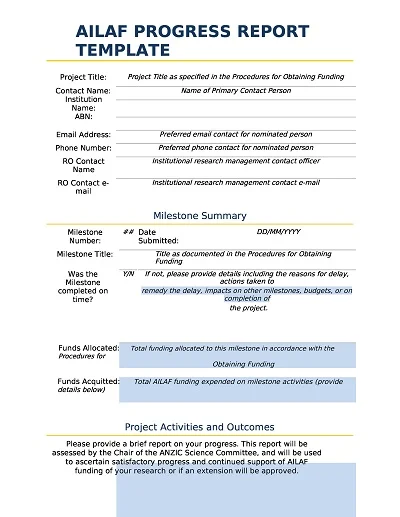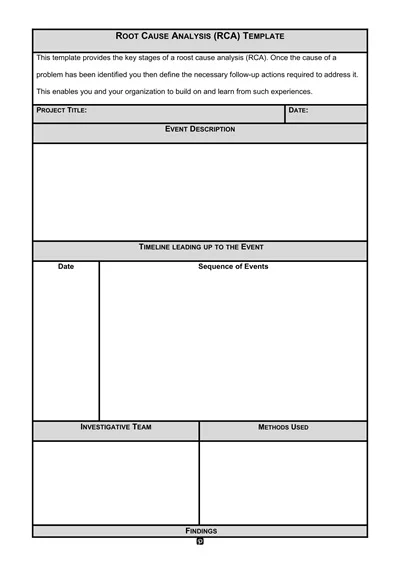A Customer Service Report Template is a document formatted in advance and used in customer service to record communication and evaluate and define inefficiencies.
Usually, it has fields that accept information such as the date of interaction, the customer’s information, the details of the concern or complaint, the status of the concern/complaint resolution, and the agent’s comment. This template facilitates the collection and sorting of customer feedback and input, evaluation of service delivery, and planning to improve service delivery.
Download Free Customer Service Report Templates
What is a Customer Service Report?
A Customer Service Report is a document that provides an overview of a business’s client care team and its productivity. It often includes figures such as response and resolution time, customer satisfaction level, the number of resolved cases, or a description of interactions with customers.
Whether to evaluate overall customer experience, measure customer satisfaction level, or compare itself with other companies, it is a key instrument that must be utilized by any business to determine where and how it can improve.
Benefits of Using a Customer Service Report
CSB reports are central to establishing an ongoing process of enhancing CS activities and proceedings. These reports provide insights to help businesses make wiser decisions that enable them to achieve their goals and objectives.
Below are some critical benefits of utilizing customer service reports:
Improved Customer Satisfaction
These provide detailed information about the clients, their experiences, and the service provider’s experience to see where it is commendable or has room for improvement.
Hence, when a business knows its customers and its ability to address their concerns, this will be a positive way of improving service quality, hence the need for better customer satisfaction.
Increased Efficiency
This availability makes it possible for different companies to discover regular complaints and questions that are normally raised in the customer service section. In this way, the answers can be easily synchronized, and likewise, the time used in handling the complaints can be minimized.
This helps to enhance the work of the customer service team’s management and reduce the time that the customer takes to get his/her issue solved.
Enhanced Training and Development
In the reports, there are seesawings concerning the insight or capabilities of customer service staffs. It is possible to develop specific training activities and thus enrich the team’s skill set and make it more capable of responding to customer requirements when compared to previous situations.
Strategic Decision Making
Acquiring complete information on customers and how they react to various products and services allows companies to make informed decisions about revamping their products, improving service delivery, and even formulating effective strategies for approaching customers.
Customer Retention and Loyalty
Based on the above report, customer service can be enhanced by checking and prioritizing good customer relationships. This results in increased retention rates and better customer loyalty, an indispensable factor in the effectiveness of business endeavors.
Critical Components of a Customer Service Report
A customer service report is a helpful tool that can help a company observe the functioning of the current customer support. Customer satisfaction is a numerically measurable reference that indicates customers’ level of satisfaction, achievements, and experience.
Several key components should be included in a comprehensive customer service report:
- Customer Satisfaction Scores (CSAT): A performance indicator that reflects the extent to which goods or services meet or exceed the customers’ anticipated level.
- Net Promoter Score (NPS): An index used to reflect the customers’ intention of their experiences within a company and likely to recommend other clients to use the same company’s products or services in a ratio of one hundred to minus one hundred.
- Customer Effort Score (CES): This score determines the extent to which customers can access different companies’ products or services and solve their concerns, which affects the long-term customer experience.
- First Response Time: The average time the customer service team takes to respond to a customer request or any question the customer may have regarding a product.
- Resolution Time: The average time it would take to handle a customer’s complaints and queries from the time they are first made.
- Customer Support Tickets: An assessment of the overall number of customer concerns relating to a given firm in a given time span.
- Customer Feedback and Comments: This information can offer added depth by going beyond the numbers that can easily be obtained from the customers.
- Service Level Agreement (SLA) Compliance Rate: The number of services fixed in the agreed number of hours to solve a service request or a service problem stated in the agreed contractual service level.
These components critically examine a company’s CS performance, identifying strengths that can be emulated and areas of weakness that need to be addressed.
Strategies for Enhancing Customer Service
In today’s fiercely competitive business environment, the importance of devoted efforts to effective customer relationship management cannot be overemphasized. In a global economy, firms are under pressure to create value through customer satisfaction in order to retain consumers and gain new ones.
Here are some strategies that companies can implement to enhance their customer service:
Utilize Technology to Streamline Processes
The adoption of technology in the provision of customer service brings out a major improvement in service delivery. Techniques like CRM (Customer Relationship Management) help businesses keep records of and experience and evaluate customer relationships so that each individual feels adequately attended to.
Personalize Customer Interactions
When it comes to voice interactions, personalization has a considerable effect in a world where technology delivers automatic replies. Such factors as calling customers by their names, recalling their individual details, or the particular solutions they prefer can go a long way in ensuring that satisfaction levels reach new heights and customers remain loyal.
Implement a Multi-channel Support System
Customers appreciate the flexibility to reach out through their preferred communication channels, including the traditional options of email, social media, live chat, or phone. Caring support for multi-channel: Customers feel supported at any time and value, no matter their preferred channel.
Empower Your Customer Service Team
Ensure the customer service department has the necessary tools and authorization to meet clients’ needs effectively and know how to go about it. When employees are empowered, they are likely to put extra effort into the content of their duties to make the customer happy.
Collect and Act on Customer Feedback
Customers are the key to any business, and to ensure that you get to know what your customers are saying about your business, it is wise to always ask for their feedback and then take time to read through the comments made by the customers to identify areas that need to be enhanced.
This feedback gives a way of responding to it, showing the culture and value of customer satisfaction in delivering good service in an establishment that leads to a positive reputation and customer recommendations.
Through such steps, businesses can effectively advance the provision of customer services, enhancing customer satisfaction and loyalty and, hence, business prosperity.
How to Create a Customer Service Report Template
To design a customer service report template, the following data are collected: those that best describe the role of customer service, current trends, and satisfaction rates.
Here’s how you can make an effective template:
- Define Your Objectives: Assess the goal of generating the report. This could involve the type of information that concerns the buyers’ response to the product and the time taken to offer solutions, among other variables.
- Select Key Metrics: Depending on your strategic goals, choose the most applicable KPIs for your case. Key industry-standard indicators are Mean Time To First Response (MTR), Average Handle Time (AHT), CSAT, and NPS.
- Choose a Reporting Tool: The last requirement is to choose a tool that can initially collect the data and then show everything in the most convenient way. This could be a spreadsheet, a simple desktop application like Microsoft Excel or Google Sheets, or a powerful reporting tool.
- Design the Layout: There must be a certain logical flow. The template should logically fit from one point to the next. Give an overview of the metrics, then proceed to the detailed section to elaborate on the numbers. Embed charts and graphs in your content to supplement the points and data and make it more presentable.
- Automate Data Collection: Automating the collection process can eliminate the time wasted compiling the data on the debtors individually. While many customer support services exist, most of them include features for integration with reporting systems.
- Include a Section for Insights and Actionable Steps: Leave a blank in the template for analyzing the data collected and recommendations or actions to be taken within the report.
- Test and Revise: Before implementing a template into a production environment, it is recommended to run a few samples to check that they perform as intended. For example, don’t be stubborn and insist on using the same exact words or writing style that has been successful; be willing to experiment and adapt to new circumstances.

